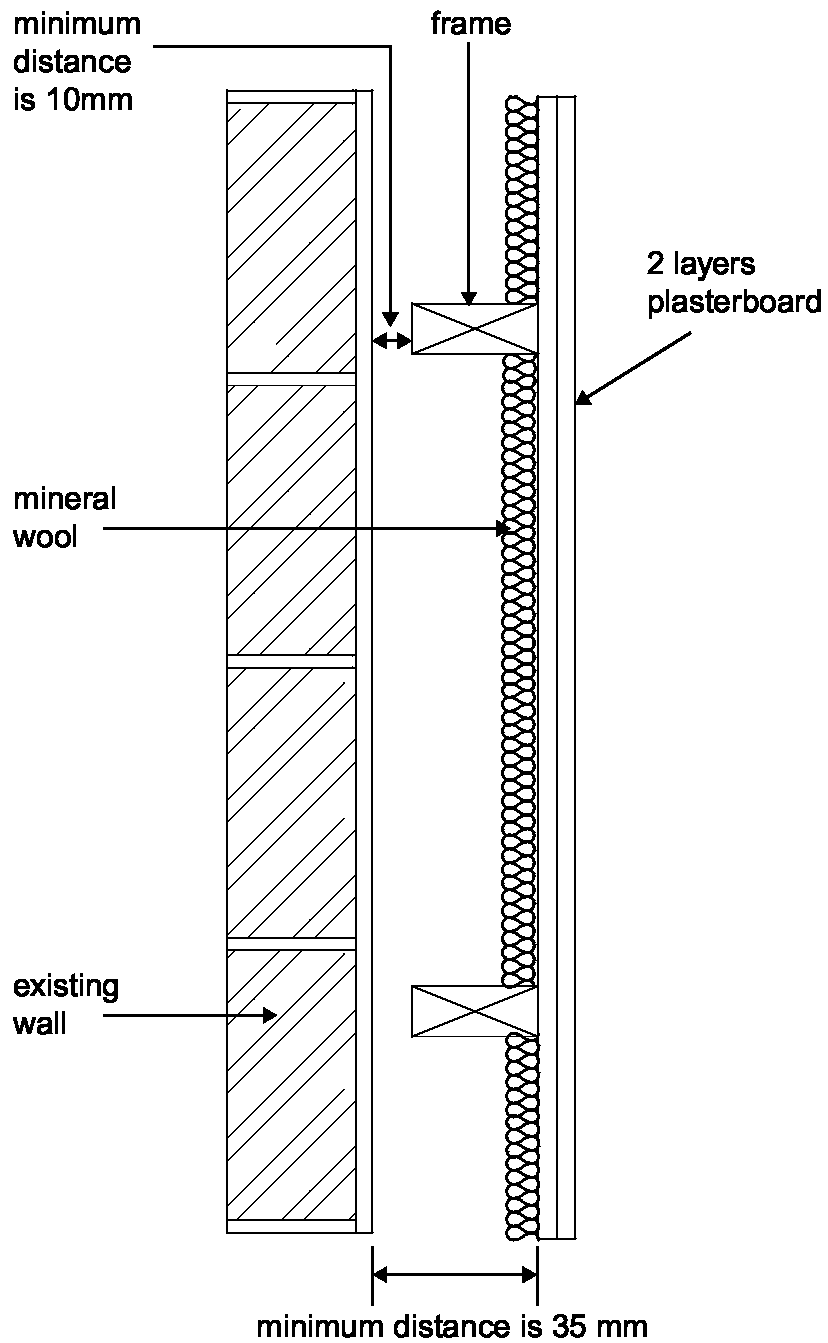
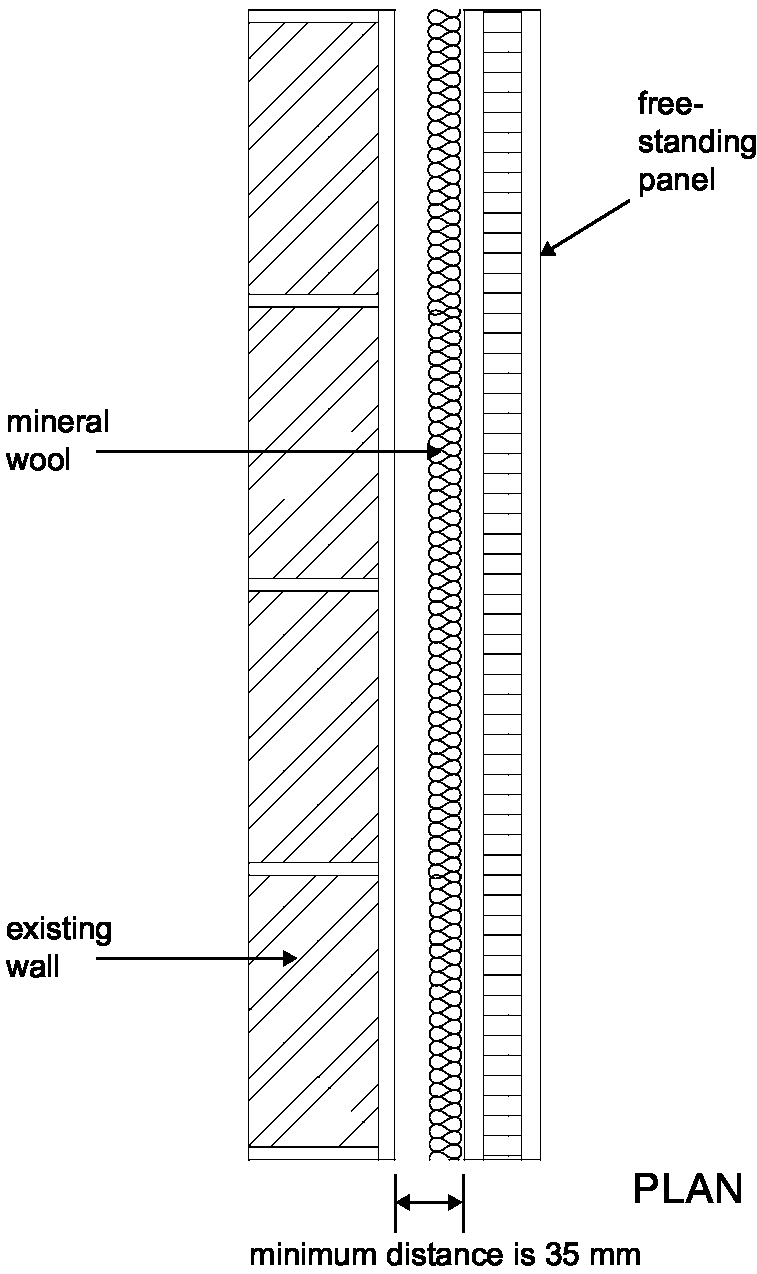
4.22 The resistance to airborne sound depends on the form of existing construction, the mass of independent panel(s), the isolation of the panel(s) and the absorbent material.
4.23 The independent panel may be used on one side of the existing wall only where the existing wall is masonry, and has a thickness of at least 100 mm and is plastered on both faces. With other types of existing wall the independent panels should be built on both sides.
4.24 Independent panel(s) with absorbent material (see Diagram 4-2)
4.25 Points to watch
Do
Do not
Diagram 4-2: Wall treatment 1


Resistance to the passage of sound 55
4.26 The resistance to airborne and impact sound depends on the combined mass of the existing floor and the independent ceiling, the absorbent material, the isolation of the independent ceiling and the airtightness of the whole construction.
4.27 Independent ceiling with absorbent material (see Diagram 4-3)
The ceiling should be supported by one of the following methods:
Note: This construction involves a separation of at least 125 mm between the upper surface of the independent ceiling and the underside of the existing floor construction. However, structural considerations determining the size of ceiling joists will often result in greater separation. Care should be taken at the design stage to ensure that adequate ceiling height is available in all rooms to be treated.
4.28 Where a window head is near to the existing ceiling, the new independent ceiling may be raised to form a pelmet recess. See Diagram 4-4.
4.29 For the junction detail between floor treatment 1 and wall treatment 1, see Diagram 4-5.
4.30 Points to watch
Do
Do not
Diagram 4-3: Floor treatment 1
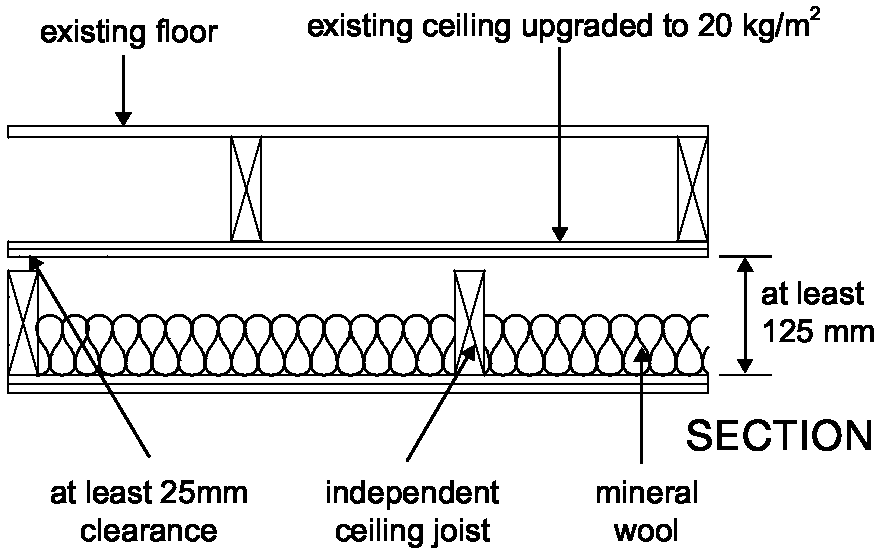 Diagram 4-4: Floor treatment 1 - high window head detail
Diagram 4-4: Floor treatment 1 - high window head detail
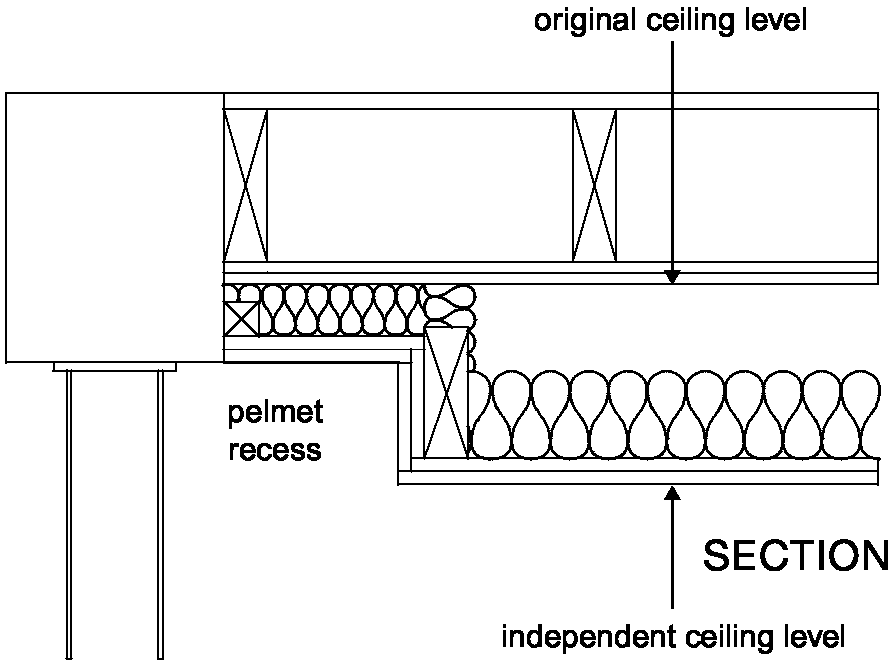
Resistance to the passage of sound 56
Diagram 4-5: Floor treatment 1 - wall treatment 1
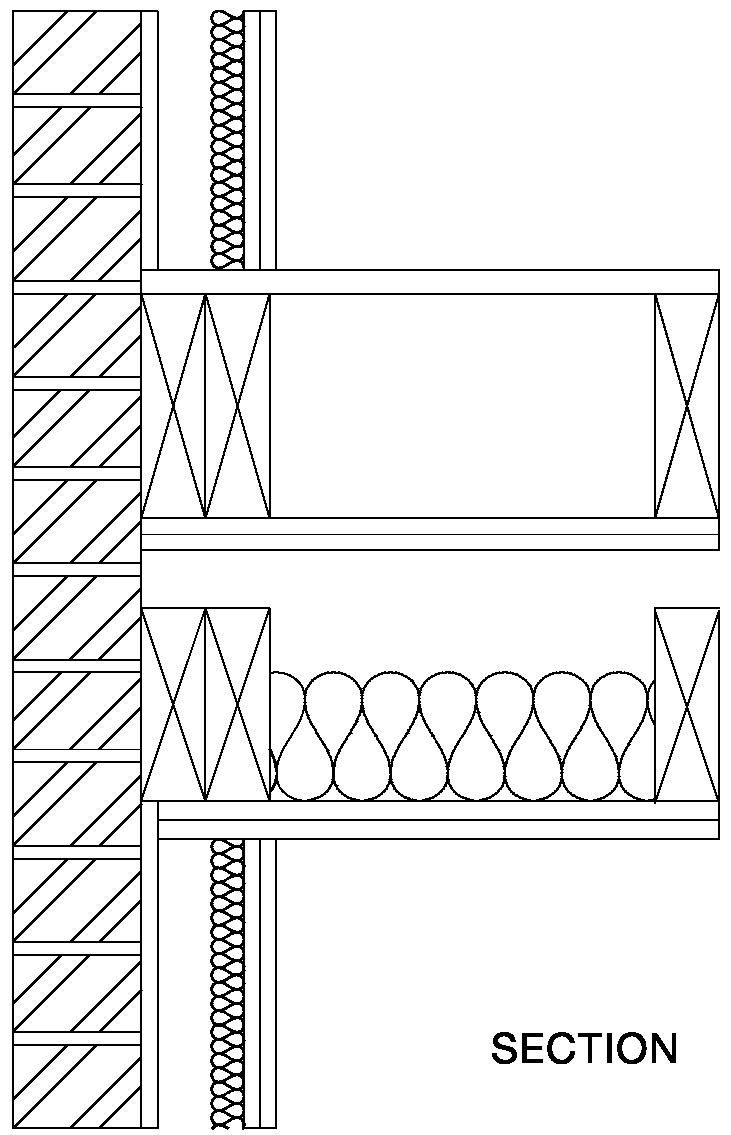
4.31 The resistance to airborne and impact sound depends on the total mass of the floor, the effectiveness of the resilient layer and the absorbent material.
4.32 Platform floor with absorbent material (see Diagram 4-6)
Where this treatment is used to improve an existing timber floor, a layer of mineral wool (minimum thickness 100 mm, minimum density 10 kg/m3) should be laid between the joists in the floor cavity.
The floating layer should be:
The floating layer should be laid loose on a resilient layer. The resilient layer specification is:
Note: The lower figure of density for the resilient layer gives the best insulation but a ‘softer’ floor. In such cases additional support can be provided around the perimeter of the floor by using a timber batten with a foam strip along the top attached to the wall.
4.33 For the junction detail between floor treatment 2 and wall treatment 1, see Diagram 4-7.
4.34 Points to watch
Do
Do not
Diagram 4-6: Floor treatment 2
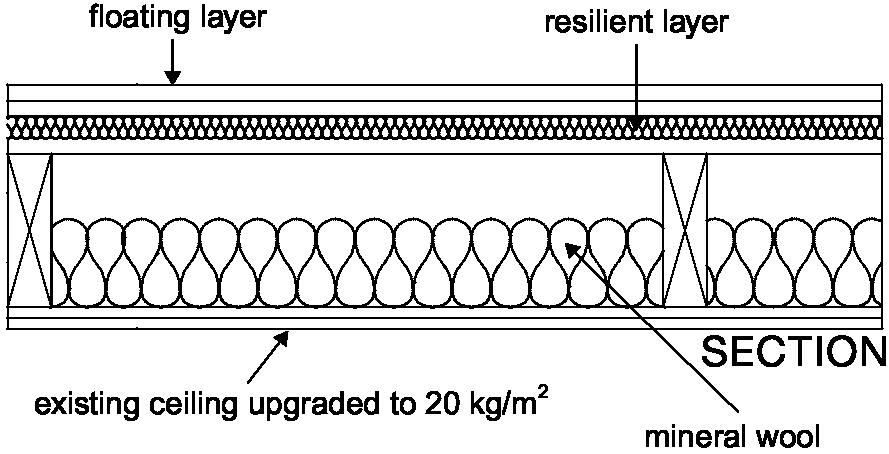
Resistance to the passage of sound 57
Diagram 4-7: Floor treatment 2 - wall treatment 1
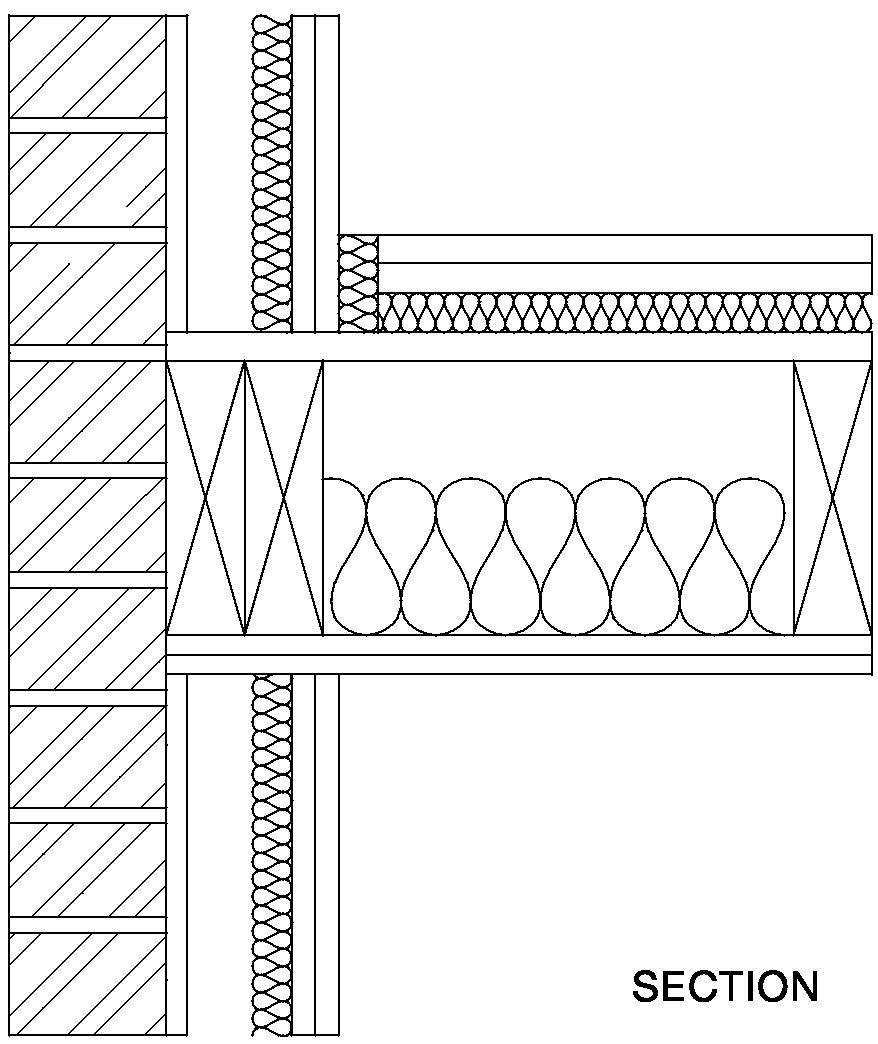
Stair treatment: Stair covering and independent ceiling with absorbent material
4.35 Stairs are subject to the same sound insulation requirements as floors where they perform a separating function.
4.36 The resistance to airborne sound depends mainly on the mass of the stair, the mass and isolation of any independent ceiling and the airtightness of any cupboard or enclosure under the stairs. The stair covering reduces impact sound at source.
4.37 Stair covering and independent ceiling with absorbent material Lay soft covering of at least 6mm thickness over the stair treads. Ensure it is securely fixed (e.g. glued) so it does not become a safety hazard.
If there is a cupboard under all, or part, of the stair:
4.38 For fire protection where a staircase performs a separating function refer to Building Regulation Part B - Fire safety.
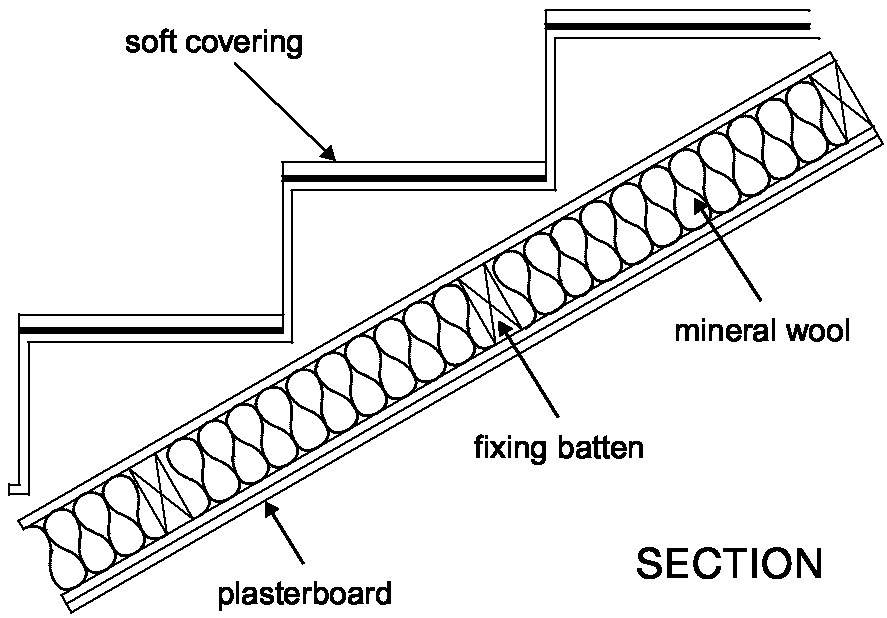 Diagram 4-8: Stair treatment
Picture
Diagram 4-8: Stair treatment
Picture
4.39 For floating floors, carry the resilient layer up at all room edges to isolate the floating layer from the wall surface.
4.40 For floating floors, leave a small gap (approx. 5 mm) between the skirting and floating layer and fill with a flexible sealant.
4.41 The perimeter of any new ceiling should be sealed with tape or caulked with sealant.
4.42 Relevant junction details are shown in Diagrams 4-5 and 4-7.
4.43 Where there is significant flanking transmission along adjoining walls then improved sound insulation can be achieved by lining all adjoining masonry walls with either
4.44 Where the adjoining masonry wall has a mass per unit area greater than 375 kg /m2 then such lining may not be necessary, as it may not give a significant improvement.
Note: Specialist advice may be needed on the diagnosis and control of flanking transmission.
Resistance to the passage of sound Approved Document E 58
Junctions with floor penetrations
4.45 Piped services (excluding gas pipes) and ducts which pass through separating floors in conversions should be surrounded with sound absorbent material for their full height and enclosed in a duct above and below the floor.
Do
4.46 Pipes and ducts that penetrate a floor separating habitable rooms in different flats should be enclosed for their full height in each flat.
4.47 The enclosure should be constructed of material having a mass per unit area of at least 15 kg/m2.
4.48 Either line the enclosure, or wrap the duct or pipe within the enclosure, with 25 mm unfaced mineral wool.
4.49 The enclosure may go down to the floor base if floor treatment 2 is used but ensure isolation from the floating layer.
4.50 Penetrations through a separating floor by ducts and pipes should have fire protection to satisfy Building Regulation Part B - Fire safety. Fire stopping should be flexible and also prevent rigid contact between the pipe and floor.
Note: There are requirements for ventilation of ducts at each floor where they contain gas pipes. Gas pipes may be contained in a separate ventilated duct or they can remain unducted. Where a gas service is installed, it shall comply with relevant codes and standards to ensure safe and satisfactory operation. See The Gas Safety (Installation and Use)
Regulations 1998, SI 1998 No.2451. Diagram 4-9: Floor penetrations Picture
Approved Document E Resistance to the passage of sound 59
Section 5: Internal walls and floors for new buildings
Introduction
5.1 This Section gives examples of internal wall and floor constructions that meet the laboratory sound insulation values set out in Section 0: Performance - Table 2.
5.2 These constructions have been designed to give insulation against airborne sound. For internal floors, insulation against impact sound could be improved by adding a soft covering (e.g. carpet).
5.3 They are grouped in four main types as shown below.
5.4 Internal wall type A or B: Timber or metal frame
The resistance to airborne sound depends on the mass per unit area of the leaves, the cavity width, frame material and the absorption in the cavity between the leaves.
5.5 Internal wall type C or D: Concrete or aircrete block
The resistance to airborne sound depends mainly on the mass per unit area of the wall.
5.6 Internal floor type A or B: Concrete planks or concrete beams with infilling blocks
The resistance to airborne sound depends on the mass per unit area of the concrete base or concrete beams and infilling blocks. A soft covering will reduce impact sound at source.
5.7 Internal floor type C: Timber or metal joist
The resistance to airborne sound depends on the structural floor base, the ceiling and the absorbent material. A soft covering will reduce impact sound at source.
5.8 For both internal walls and internal floors the constructions are ranked, as far as possible, with constructions giving better sound insulation given first.
Doors
5.9 Lightweight doors with poor perimeter sealing provide a lower standard of sound insulation than walls. This will reduce the effective sound insulation of the internal wall. Ways of improving sound insulation include ensuring that there is good perimeter sealing or by using a doorset.
5.10 See Building Regulation Part F - Ventilation and Part J - Combustion appliances and fuel storage systems.
Layout
5.11 If the stair is not enclosed, then the potential sound insulation of the internal floor will not be achieved, nevertheless, the internal floor should still satisfy Requirement E2.
5.12 It is good practice to consider the layout of rooms at the design stage to avoid placing noise sensitive rooms next to rooms in which noise is generated. Guidance on layout is provided in BS 8233:1999 Sound Insulation and Noise Reduction for Buildings - Code of Practice.
Junction requirements for internal walls
5.13 Section 3: Separating Floors contains important guidance on junctions of separating floors with internal walls.
5.14 Fill all gaps around internal walls to avoid air paths between rooms.
Junction requirements for internal floors
5.15 Section 2: Separating Walls contains important guidance on junctions of separating walls with internal floors.
5.16 Fill all gaps around internal floors to avoid air paths between rooms.
5.17 Internal wall type A: Timber or metal frames with plasterboard linings on each side of frame (see Diagram 5-1)
each lining to be two or more layers of plasterboard, each sheet of minimum mass per unit area 10 kg/m2
linings fixed to timber frame with a minimum distance between linings of 75 mm, or metal frame with a minimum distance between linings of 45 mm
all joints well sealed
Resistance to the passage of sound 60